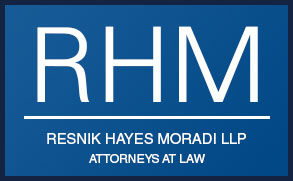LOCAL BANKRUPTCY RULES AMENDMENTS
EFFECTIVE FEBRUARY 1, 2021
The Board of Judges for the United States Bankruptcy Court, Central District of California, approved the following new rules and amendments to the Court’s Local Bankruptcy Rules (LBRs) that become effective February 1, 2021:
| Summary of New Local Bankruptcy Rules | ||
| LBR | LBR Title | Purpose of New Rule |
| LBR 2015-3 | PRECONFIRMATION REQUIREMENTS FOR SUBCHAPTER V DEBTORS, DEBTORS IN POSSESSION, AND TRUSTEES | Implements Interim Rule 2015’s postpetition, preconfirmation financial reporting duties of the subchapter V debtor. |
| LBR 3014-1 | ELECTION UNDER 11 U.S.C. § 1111(b) BY SECURED CREDITOR IN SUBCHAPTER V CASES | Provides a deadline for secured creditors to make an “1111(b) election” in a subchapter V case. |
| LBR 3020-2 | POSTCONFIRMATION REQUIREMENTS IN A SUBCHAPTER V CASE | Implements the SBRA’s postconfirmation reporting requirements under either a consensual or nonconsensual plan. |
| LBR 3022-2 | FULL ADMINISTRATION IN A SUBCHAPTER V CASE | Implements the postconfirmation administration and closing of the estate under either a consensual or nonconsensual plan confirmed under the SBRA. |
| LBR | LBR Title | Type of Amendment |
| LBR 2015-2 | REQUIREMENTS FOR CHAPTER 11 DEBTORS IN POSSESSION, CHAPTER 11 TRUSTEES, AND SUBCHAPTER V TRUSTEES | Amended to address continued applicability to chapter 11 cases, while noting that LBR 2015-3 provides more specific rules applicable to subchapter V cases only. |
| LBR 3003-1 | BAR DATE IN CHAPTER 11 CASES | Amended to reflect subchapter V bar dates for prepetition claims as well as governmental entities. |
| LBR 3017-2 | CHAPTER 11 DISCLOSURE STATEMENT – APPROVAL IN SMALL BUSINESS CASES AND WHEN REQUIRED IN SUBCHAPTER V CASES | Amended to reflect applicability to subchapter V cases where the Court has ordered that §1125 applies. |
| LBR 3020-1 | CHAPTER 11 PLAN CONFIRMATION AND POSTCONFIRMATION REQUIREMENTS | Amended to clarify postconfirmation reporting requirements in traditional, non-subchapter V, chapter 11 cases. |
| LBR 3022-1 | FINAL DECREE AND CLOSING A CHAPTER 11 CASE | Amended to provide that it is also applicable to subchapter V cases. |
| LBR 4002-1 | DUTIES OF DEBTOR AT MEETING OF CREDITORS | Amended to cross-reference new LBR 2015-3 with respect to duties of a subchapter V debtor. |
| LBR 6004-1 | SALE, USE, OR LEASE OF ESTATE PROPERTY | Amended to include subchapter V trustee in possession as entity that may seek to sell property of the estate outside of the ordinary course. |
The revised LBRs, and a redline summary of the revisions, are available on the Local Bankruptcy Rules web page of the Court’s website www.cacb.uscourts.gov.
KATHLEEN J. CAMPBELL
CLERK OF COURT
To view the entire Public Notice from the Court’s website select the following link: http://www.cacb.




